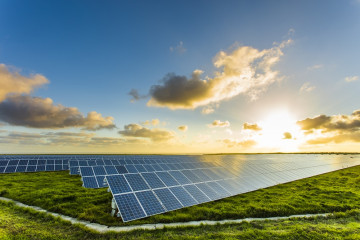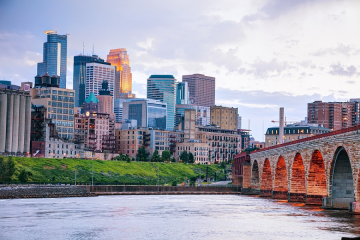Low-income, minority, tribal, and indigenous communities are more likely to be impacted by environmental hazards and more likely to live near contaminated lands. While these communities fought for justice for decades, the topic of environmental justice has become increasingly thrust into the spotlight in recent years due to a renewed public focus on historically marginalized communities.
In a recent webinar, experts from CMBG3 Law, Great American Insurance Group, and Antea Group explored environmental justice and its history, reviewed the EPA’s plan and infrastructure legislation, examined how to evaluate exposure, and discussed pertinent insurance trends.
The full webinar is available to view on-demand at any time through the link below:
Watch On-DemandWhat is Environmental Justice
As defined by the Environmental Protection Agency (EPA), Environmental Justice (EJ) is the fair treatment and meaningful involvement of all people regardless of race, color, national origin, or income, with respect to the development, implementation, and enforcement of environmental laws, regulations, and policies. Historically, low-income and minority communities have had the least environmental protection in our society. The goal of EJ is to ensure that all communities have the same degree of protection from environmental hazards and have equal access and influence on decision-making processes in the community.
Environmental Justice started to gain momentum within the federal government in the early 1990’s with the introduction of the Environmental Equity Work Group which led to the development and use of Permit screening, EJ Action Plans, and EJ Toolkits. Environmental Justice legislation has continued to evolve throughout the years, bringing us to the recent “Journey to Justice.” The “Journey to Justice” took place in 2021 when EPA Administrator Michael S. Regan visited several metropolitan areas and the South to gain a better understanding of what action needed to be taken from an EJ standpoint. This journey led to the launch of the 2022 EJ Action Plan.
The four primary goals of this plan include:
- Strengthen the interplay between environmental statutes and civil rights laws. Establish the "Good Governance" program to ensure citizens' concerns can be addressed in the moment and influence decision-making.
- Ensure EJ is incorporated into regulatory development and consideration is given to "pollution-burdened, underserved, and tribal communities." For example, consideration of EJ factors into the Superfund process.
- Improve community engagement in rulemaking, permitting decisions, and policies, focusing on pollution-burdened and underserved communities.
- Implement the Justice 40 Initiative to uphold President Biden's pledge to deliver at least 40% of benefits from investment in climate and clean energy to disadvantaged communities.
Another key piece of legislation that will play a major role in advancing the EJ movement is the Infrastructure Investment and Jobs Act, November 15, 2021. Billions of dollars are being invested in several areas which directly tie into EJ areas including projects to improve mass transit, replace lead pipes, and provide clean drinking water to disadvantaged communities along with investing for cleanup of Superfund sites, abandoned mines, and oil wells.
At the state level, we are continuing to see states move aggressively to act on EJ issues and pass legislation. In the map below, we can see states that have enacted, or are in the process of enacting, EJ legislation as of April 2021:
What is my Exposure
As a company, the key to staying connected with the EJ movement and the evolving legislation is to be prepared and know your risks. There are two key factors that can help determine the potential magnitude of your risk exposure: the type of industry and the emissions or wastestream generated, and the location of the site in proximity to disadvantaged areas.
There are a few helpful tools you can utilize in determining your exposure. These tools use data specific to the location and history of the EJ areas to provide current insights.
- EPA’s ECHO Facility Search
- EPA’s EJSCREEN tool
- State level EJ resources including California’s EnviroScreen for example
These tools can give you a good starting point to evaluate your risk. Understanding your risk and staying current on EJ trends will help guide your decision-making around EJ issues. Another good way to better understand EJ trends, and where they might be going, is to look back at past litigation examples. Using historic context, we can gain insight to how the litigation we see today has developed over time, understand current trends, and predict the future trends of EJ litigation.
Insurance is a reactionary market and as these EJ trends take shape through regulatory updates, environmental liability policies will likely follow suit.
Historic Examples:
- 1960's Civil Rights Movement: While this movement was not directly tied to environmental issues, it addressed a lot of inequality and injustices across minority and marginalized communities. It was one of the first mass movements by minority communities to force the government to act, setting an example for many of the EJ movements we see today.
- 1978 Love Canal: Taking place in Upstate New York, this case addressed pollution that took place on a wide scale in a minority community built on top of a former landfill. The affected community was primarily low-income housing. It is one of the first cases where we saw large community pushback on environmental related issues.
- 1979 Bean vs. Southwestern Waste Management Corp: In this case, the city of Houston, Texas wanted to build a new landfill directly adjacent to a primarily black neighborhood. EJ allegations were levied against the city for disparate and discriminatory treatment. While the case was ultimately unsecuessful, it heavily influenced similar cases in the future.
- 1989 Louisiana: A Uranium enrichment plant was proposed to be built next to a marginalized community. Ultimately the Regulatory Commission denied the permit, and this became the first time the EPA was asked to deny a permit based solely on EJ issues and in fact did so.
- 2002 EPA Developing first EJ Action Plan: While this was just a rudimentary plan, it set the stage for where we are now and the recent 2022 EJ Action Plan.
Current Trends:
Presently, we are seeing an increase in regulations and lawsuits surrounding the Clean Air Act, the Clean Water Act, and other “climate change” topics. Along with these increased areas of litigation, we are seeing evolving trends in who is bringing lawsuits. The plaintiffs are citizens, environmental interest groups, and classes. In addition to the EPA and states, companies are increasingly seeing litigation brought against them.
Future Trends:
Based on past and current trends, we can expect to see an increase in litigation across the following areas:
- Personal injury/wrongful death
- Communities with extensive lead pipe systems
- PFAS and ethylene dioxide: pollution and personal injury claims
- Civil Rights Act Title VI
Actions You Can Take to Prepare
With the Environmental Justice Movement continuing to grow, now is the time to ensure you are prepared. Start by evaluating your potential risks. Use the tools available to you to understand and screen for your risks to find out what actions you can take to mitigate risk. Once you’ve identified actions to take, work to monetize your risks to prioritize sensitive elements and better communicate the need for action to leadership. Transparency is key, be sure to communicate your plans not only with internal stakeholders but with the community as well. And finally, work on continuous improvement.
While Environmental Justice is by no means a new topic, we are continuing to see it grow and evolve. As it becomes more prominent in social, political, and legal spaces, organizations will have to grow and evolve alongside it.
To learn more or talk with one of our experts, contact us today.
Want more news and insights like this?
Sign up for our monthly e-newsletter, The New Leaf. Our goal is to keep you updated, educated and even a bit entertained as it relates to all things EHS and sustainability.
Get e-NewsletterHave any questions?
Contact us to discuss your environment, health, safety, and sustainability needs today.





